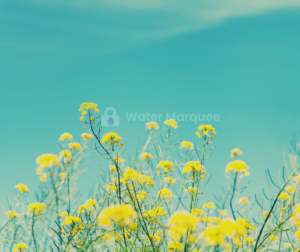How can a Watermark Generator protect your photos from theft?
No photographer could overlook the marketing efficiency of the world wide web. Nonetheless, it comes, potentially, with a price. While uploading your pictures online is an excellent way to gain exposure and expand your reach, it likewise means you are making yourself vulnerable to the possibility of someone downloading and using your work without your consent. In a lot of circumstances, people would do it out of ignorance, others would do it for profit, but for whatever reason, if you do not want your photos stolen, you need to protect them vigilantly.

The easiest way to do this is to put a watermark on every picture you upload online. A watermark guarantees that everyone who sees the photos knows who captured them and recognizes your skills it took to shoot such stunning photos.
You have a few options to think over when making a watermark, and those choices should be aligned with the reason you are uploading your photographs online.
Why are Watermarks Important?
Generally, watermarks are for protecting content and claiming ownership of intellectual property. Without watermarks, important digital materials and assets, like images, could be vulnerable to photo theft or even unauthorized use.
Photo Theft
When uploading your digital content, like photographs, to websites or public servers, a quick right-click and save lets someone download and save your file in their computer. How, when, and where they use it is their discretion.
With no proper protection like watermarking, organizations, and companies that invest resources, time, and effort into producing original digital materials risk their content being downloaded and used by others, possibly affecting business opportunities as well as revenues. Watermarking could deter this kind of digital theft or prevent it completely (when executed well).
Unauthorized Use and Distributions
Digital materials could also be vulnerable to internal misuse even when stored in a shared cloud drive or private media library. If it is vague, if the content is already approved, still in production, or intended only for internal use, staff could use the content in error.
While commonly unintentional, the unapproved use of digital content could be detrimental to your brand, spread fake news and misinformation, or even have dire legal consequences and implications. Watermarking could offer clarity when assets are only meant to be viewed, not shared. Here are a few key pointers to remember when watermarking your images:
1 Text vs. Image Watermarks
The fastest way to watermark your photographs is to put your name and/or the name of your business. Nevertheless, be careful of the position and size of your watermark, since the viewer’s eye will automatically be drawn to text in a photo, which could sometimes be distracting. A text watermark is an ideal approach if you are only uploading images occasionally, and you are not aiming to establish and develop a brand identity.
2 How to Watermark Your Photos
However, if you are a professional photographer or upload a lot of photos online, you should consider making or having someone make an image watermark for you. Image watermarks provide a more professional look, and they are an essential aspect of branding. If you choose to go with an image watermark, ensure that it scales well; they could be tougher to place than simple text watermarks because they typically take up more space in the photos.

3 Where to Place Your Watermark
Where you place your watermark, text, or image watermark on your photographs relies on why you are watermarking in the first place. If it is just to get due credits for your photos, you could place your watermark outside of the photo’s focal point – while still considering the possibility that if the watermark was poorly placed, it might still get cropped out of the image easily.
To minimize that risk, you could place the watermark in a portion of high contrast, like in the bottom right corner of the photo.
A watermark that is placed away from the focal point reduces the impact it could have on the general look of the photo.
Suppose you are a professional photographer whose photography niche is based on capturing photos for a particular client, like children or wedding photography. In that case, you need a more obvious watermark to photo theft. You should also consider putting a bigger watermark in the center of the photos or tiling your watermark. However, do not go overboard – you still need the customer to like the photos enough to pay for the non-watermarked versions.
4 Watermark Generator Tips
Are you concerned that the pictures you upload on the internet are being used without your permission? Watermarking photos is an ideal way to protect your original content against people passing who pass others’ work and art as their own. Also, it helps expand your marketing reach and build brand awareness.
Ideally, watermarking should be a way to reach out to other photographers and clients to inform them who took this spectacular shot, and not be suspicious of everybody trying to steal your photographs and thus pull their attention away from your excellent composition.
5 Try a Semi-Transparent Watermark
You can try a semi-transparent watermark– it would still protect your images, but the watermark would look less intrusive. Using the right watermark generator tool like Watermarquee, it’s quick and easy to adjust your watermark transparency.

6 Let Them Know Where To Find You!
It is a great idea to include your website address or other contact information in your text watermark. This could help promote your work and amp up your marketing efforts without actually lifting a finger. Your potential clients should know where and how to find you!
When folks share your photos online, they rarely mention where they got it. Hence, your name and contact details would help potential clients to find you.
Summing Up the Watermark Generator
Ultimately, the major advantages of putting a watermark on your photos are brand recognition and copyright notice. It lets people know that your photos are copyrighted, and it likewise identifies you as the owner. Also, if your photos are watermarked, other people would have a way to find you or contact you should they wish to hire your services or ask for permission to use your images.
If you have precious images you’d like to protect online, it’s easy, just start watermarking for free with WaterMarquee today.

































